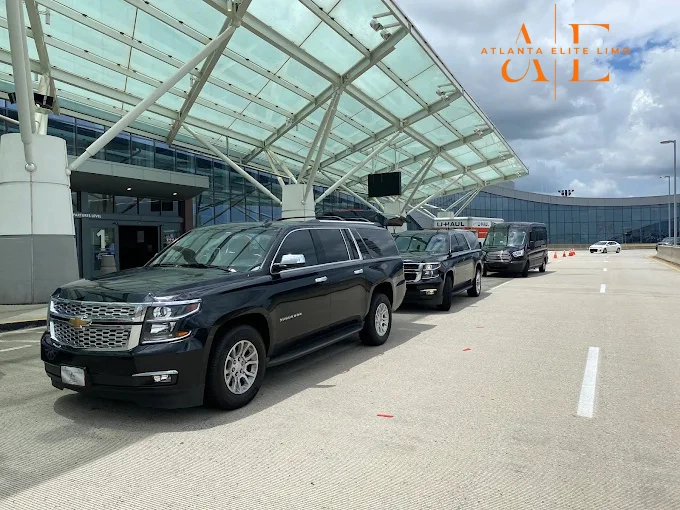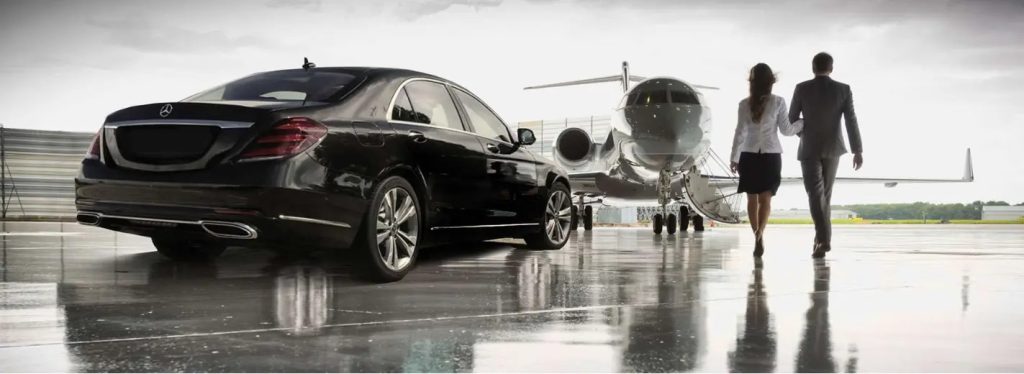Airport transportation looks simple from the curb, but the pricing underneath is layered. When someone calls for an Atlanta Airport Limo Service, they think about a gleaming SUV or a classic stretch and a sharp driver holding a tablet at baggage claim. What they are really buying is time, predictability, and a set of small operational choices that make the airport experience feel calmer. The car is only part of the bill.
I have run ground transportation programs for corporate travel teams and worked with operators serving Hartsfield-Jackson Atlanta International Airport long enough to spot the lines on an invoice and understand why they appear. If you are comparing an Airport Limousine Service to rideshare or a standard taxi, or if you are creating a policy for Chauffeur Airport Transfers for a sales team, this breakdown will help you see what is typically included in an airport limo service, what varies by company, and where you can optimize cost without giving up reliability.
What you are buying when you book a limo at ATL
A chauffeured airport transfer has three pillars: guaranteed availability, managed arrival timing, and professional handling of your baggage and route. That bundle is what pushes it beyond a basic point-to-point ride. For Atlanta in particular, add intimate knowledge of the airport’s layout and the traffic patterns that change by terminal, day of week, and event calendar. A seasoned chauffeur knows when flights from Europe stack up at Concourse F and how that affects the international arrivals hall, or how a Falcons game downtown can add twenty minutes to a 6 pm pickup from domestic south.
Most services package the ride as a flat rate within a defined metro zone, then tack on itemized fees. Understanding each line helps you compare apples to apples.
The base fare, unpacked
The base fare is usually a zone-based or mileage-based point-to-point price that includes the vehicle, a professional chauffeur, and a set window of wait time. In Atlanta, for a sedan from Midtown to ATL, I see base fares in the 80 to 130 dollar range for reputable operators, with premium SUVs at 110 to 180. Downtown to the international terminal can be ten to fifteen dollars more due to routing and traffic variability. The base fare typically includes:
- A reserved vehicle class, not “or similar.” If you booked a full-size luxury sedan, you get one, not a compact when inventory runs tight.
- Professional chauffeur compensation, training, and background screening.
- Dispatch monitoring tied to your flight number. The operator tracks your inbound plane and adjusts the driver’s timing.
- Standard meet-and-greet at a designated pickup point. At ATL that might be curbside at the North or South terminal, or a parking deck rendezvous depending on construction and traffic.
That base is the anchor number you will see in a quote. Everything else modifies it.
What the wait time really covers
Wait time is the second dimension. Most Airport Limousine Service quotes include a grace period. For domestic arrivals in Atlanta, ten to fifteen minutes from the moment the driver is “on site” is common for curbside pickups. For meet-and-greet inside the terminal, thirty to forty-five minutes from gate arrival is typical, because you have baggage claim and airport walking time. After the grace period, billing shifts to per-minute or per-quarter-hour increments.
If your flight arrives early, a good operator tries to catch it. If your flight sits on the tarmac because a gate is occupied, the chauffeur’s clock keeps running. Most companies absorb some of that in the grace. If deplaning plus baggage claim drifts past expectations, you will see a wait-time charge. For ATL, a practical rule of thumb: budget for an extra 15 to 30 dollars in wait time for checked-bag domestic flights, and 30 to 60 for international arrivals during peak windows, unless you specify curbside without meet-and-greet. When you ask what is typically included in an airport limo service, the honest answer is “some, but not unlimited, waiting.”
Meet-and-greet: when it is worth paying for
ATL is busy and sprawling, and signage can be opaque to a first-time visitor. Meet-and-greet adds a uniformed greeter in the terminal with a name sign, often texting you and guiding you to the car. It removes the “where do I stand” stress. That service usually costs 20 to 45 dollars as a separate line item, sometimes more for international arrivals that require extended time. Some corporate agreements bundle one meet-and-greet per quarter for VIP travelers, but ad hoc bookings will itemize it.
If you are flying into Concourse F on an international flight with checked bags, paying for meet-and-greet is rational, especially if you are hosting a client. For frequent domestic travelers flying carry-on into Concourse A or B, curbside pickup is often sufficient and keeps the invoice lean.
Airport fees, tolls, and parking
Hartsfield-Jackson assesses commercial ground transportation fees. Operators pass those along. Expect an airport access or facility fee in the 3 to 10 dollar range depending on the vehicle type and pickup method. If the driver has to stage in a paid lot, you will see parking at cost. During construction swings, ATL sometimes pushes more pickups to decks, which increases parking charges. Tolls are infrequent within central Atlanta, but if your route uses express lanes on I-75 or I-85 during peak traffic, an operator may ask if you want the time savings in exchange for tolls added at cost.

These charges are not padding. They reflect what the driver and company actually pay to operate at the airport.
The vehicle class multiplier
Within the same route, the price spread between sedan, SUV, and stretch or sprinter comes down to acquisition cost, fuel, insurance, and utilization. A late-model luxury SUV that seats five with substantial luggage space often costs 25 to 60 percent more than a sedan. Stretch limousines are specialized and can be 1.5 to 2 times the sedan price for airport transfers. A sprinter van with captain’s chairs sits near the top. If you have four travelers with four full-size checked bags, a sedan might technically fit with creative packing, but your chauffeur will suggest an SUV because it saves time and avoids friction. If you insist on the sedan and force luggage on laps, no one wins.
Gratuity and service charges
Chauffeur gratuity runs 18 to 22 percent on most Atlanta invoices. Some companies bake this into a “service fee” that includes gratuity plus administrative costs. Others separate them. If a quote looks lower than others by 20 percent, check whether it excludes tip. I have seen travelers assume gratuity was included, then tip again in cash, which delights the driver but stretches the budget. Clarify at booking.
An admin fee of 3 to 7 percent is not unusual, covering credit card processing, dispatch systems, and compliance overhead. Whether you like the line item or not, it appears because the operator’s true cost to transact the ride exceeds the base fare. You can negotiate it in a corporate contract, not in a one-off booking.
Surcharges: fuel, late night, and holidays
Fuel fluctuates. When gas prices surge, a temporary fuel surcharge appears, typically 5 to 15 dollars per ride. Late-night or early-morning pickups, say 11 pm to 5 am, sometimes carry a 10 to 25 dollar surcharge due to driver availability and safety protocols. Holidays and special events add their own premiums. If your flight lands at 12:30 am after Thanksgiving weekend, expect both surcharges. You can test this by pricing the same route for a Tuesday noon arrival and comparing.
Flight tracking and schedule protection
One of the quiet advantages of Chauffeur Airport Transfers is schedule protection. Operators tie your reservation to your flight number, then reassign a driver if the schedule shifts. With rideshare, you carry that burden, refreshing the app after delays, hoping to find a vehicle that can legally pick up at ATL at that hour. With a limo service, the adjustment labor sits on the dispatch desk.
There are limits. If your airline cancels and retimes you five hours later, your original driver will not wait on site for five hours. The company will replace the driver or re-slot your ride, and some will charge a stand-by or late-change fee if you notify them at the last minute. Read cancellation windows. Three-to-six-hour cancellation thresholds are common for sedans, longer for larger vehicles.
The ATL layout and why it matters to pricing
Hartsfield-Jackson has a domestic terminal split into North and South, plus the Maynard H. Jackson Jr. International Terminal on the east side. The MARTA station and rideshare pickups are on the domestic side, while many private car services prefer the curb at North or South or the international arrivals curb. Construction can re-route traffic, which changes pickup times. If your chauffeur cannot stop at the requested curb due to police direction, they may swing into a short-term parking deck. That adds parking charges and an extra five to ten minutes of walking time. The best companies warn you the day before if a detour is in effect.
For returning passengers, the Plane Train that connects concourses to baggage claim can be crowded in peak periods. Account for that in your planned pickup time. If you land at Concourse T, walking to baggage claim often beats waiting for the train, a small trick that eliminates five minutes of variability.
What are the VIP services at Atlanta Airport?
From the airport’s side, ATL offers expedited screening through TSA PreCheck and CLEAR, plus airline lounges across the concourses. For true VIP handling, Delta’s premium programs at ATL, including Delta Sky Club and the paid Delta One check-in on qualifying flights, are part of the picture. Some private concierge firms provide curb-to-gate escort, baggage assistance, and door-to-door oversight. Limo operators sometimes partner with these concierge services to create a seamless chain: greeter at the jet bridge, expedited guidance through customs at Concourse F if eligible, then direct hand-off to the chauffeur.
Not every traveler needs this, and not every airport vendor is authorized to meet airside. If you see a promise that looks too generous, ask for details. Legitimate VIP meet-and-assist at ATL stays within TSA and CBP rules. A red flag is any offer to bypass security lines without a recognized program.
Inside the vehicle: what’s included, what’s extra
The standard in-car amenities for a premium sedan or SUV in Atlanta include bottled water, charging cables for common devices, and climate control tailored to your preference. Many chauffeurs keep mints and tissues on hand. Wi-Fi is more prevalent in sprinters and corporate shuttles than in sedans. Child seats are a requested extra, typically 10 to 25 dollars each due to cleaning and liability. A stop on the way, for example at a pharmacy, usually adds a stop fee or reclassifies the service as hourly after a set number of minutes.
If you need ADA accommodations, reserve explicitly. Some operators maintain wheelchair-accessible vans, but not all. Advance notice lets them stage the correct vehicle at the correct terminal.
The cancellation and no-show math
No-shows cost the operator real money, which is why the terms feel firm. If the chauffeur is on site and you do not appear within the grace period, with no contact, you pay the full fare plus wait time and parking. If your flight is delayed beyond a certain point and you did not update the operator, they may release the driver and charge a reduced fee. Seasoned travelers save the chauffeur’s phone number from the dispatch text and use it when baggage claim stalls or when a gate change adds ten minutes to the walk. That small call often avoids a wait-time threshold.
Cancellation policies for sedans are kinder than for sprinters and mini-coaches. Same-day cancellation for a sedan might incur 50 to 100 percent of the fare, whereas sprinters can lock in 24 to 72 hours prior. Read terms before you book for a group.
Is it better to book airport transportation in advance?
If reliability matters, yes. Atlanta is a busy market, and events can exhaust inventory. Booking in advance guarantees a specific vehicle class and a driver who knows your flight details. It also gives you a single point of accountability if your schedule shifts. Last-minute bookings are possible, but they tend to assign the nearest available car rather than the best fit, and you lose the benefit of pre-planned staging.
Advanced bookings also allow the operator to optimize your pickup time based on your flight and terminal. For example, they will schedule the chauffeur to be in the cell phone lot ten minutes before your plane’s posted arrival, then pull to curb when you text that you have bags in hand. Those small systems only work when the service has a day or two to plan.
Is it cheaper to book airport transfers in advance?
For limo services, generally yes or at least not more expensive. Pre-booking locks in a quoted rate and avoids surge pricing behavior you see with rideshare. Operators rarely offer deep discounts for early booking, but you avoid the late-booking premium that appears during high demand. In Atlanta, same-day premium of 10 to 20 percent is common on peak weekends or mornings. Larger vehicles swing more, both because they are scarcer and because drivers commit to longer blocks.
If your schedule is flexible and you are purely price-driven, rideshare might come in lower for off-peak times. The break-even shifts once you factor wait time, baggage, and the cost of missing a meeting if your driver cancels thirty minutes before pickup. For corporate travelers carrying materials or instruments, the predictability of Chauffeur Airport Transfers usually wins on total cost of failure.
Hourly versus point-to-point: when to choose which
Most airport runs are point-to-point. Hourly makes sense if you expect extended waiting, multiple stops, or a city detour for a lunch meeting before heading to your hotel. Hourly in Atlanta for a sedan runs roughly 70 to 110 dollars per hour with a two to three hour minimum, plus fees. For an airport meet, a two-hour block can be cheaper than a base fare plus heavy wait time and extra stops. It depends on your plan. Ask the dispatcher to price both ways with realistic assumptions.

Comparing operators without getting lost in the fine print
The best way to compare is to send the same request to two or three reputable companies and ask for an all-in quote. Provide flight number, terminal if known, number of passengers, luggage description, and whether you want curbside or meet-and-greet. Then read the inclusions: grace period, gratuity policy, surcharges, and cancellation terms. If one quote omits gratuity and meet-and-greet but the others include them, adjust mentally before you judge. A transparent quote is a good sign that the operator will be equally clear when a surprise arises on the day of travel.
You can also check response quality. A strong dispatcher will ask clarifying questions rather than push you into the highest-priced vehicle. If they ask whether your golf cases are hard or soft, they are thinking ahead about the cargo space in a midsize SUV versus a full-size one.
A concrete example: Midtown to the international terminal
Picture a Tuesday evening arrival from Paris into Concourse F with one checked bag and one carry-on. You request a luxury SUV with meet-and-greet because you are hosting a visiting engineer. A credible quote might look like this:
Base fare, international terminal pickup, SUV: 145. Meet-and-greet: 35. Airport facility fee: 6. Parking: 8 to 12, variable until the greeter sees the bag carousel timing. Gratuity: 20 percent, or 37 on the base fare if calculated separately. Fuel surcharge: waived this week. Expected total: around 223 to 235.
If the flight arrives thirty minutes late and baggage claim is slow, the greeter will start the wait-time clock after forty-five minutes from gate arrival. Ten minutes of wait time at 1.50 per minute adds 15. If the airline misplaces the bag and your guest spends another twenty minutes at the service desk, the extra 30 dollars in wait time becomes a good value compared to juggling ground rides after midnight.
Change the variables. If it is a Thursday afternoon domestic arrival at Concourse C with carry-on only and you skip meet-and-greet, a sedan with curbside pickup could land around 95 to 125 all in. The experience is different, but so is the purpose.
Where limo services save money you do not see
Some costs you pay for indirectly. Chauffeur training in defensive driving, airport security protocols, and customer service reduces incidents. Fleet maintenance reduces breakdowns. Back-end flight tracking and real-time dispatch reduce misconnects. These investments mean the operator is not the cheapest, but they are the one who shows up on time in a clean vehicle with a driver who knows where to stand at the ATL South terminal when the zone police start waving cars through.
If you have ever watched a rideshare driver circle the airport twice because they lack a commercial permit for the correct lane, you recognize the value in that invisible operational groundwork.
How to avoid unnecessary charges
A few habits keep your invoice tidy without degrading the experience.
- Share your flight number and keep the message thread with dispatch open. A quick text about gate changes or baggage delays prevents avoidable wait-time charges.
- Choose curbside for domestic carry-on arrivals. Save meet-and-greet for international or VIP guests.
- Be honest about luggage. If you are four travelers with four suitcases and two golf bags, book the SUV. Paying 30 more up front beats a repack on the curb or a second vehicle at twice the cost.
These small steps reflect how limo services meter their costs. You align with their operations and avoid tripping the thresholds that trigger fees.
How corporate travel programs handle ATL airport transfers
Corporate travel managers often set policies that define when an Airport Limousine Service is allowed. A common approach: car service for early-morning departures, late-night arrivals, international flights, and client-facing trips. Rideshare for midday, short-haul, solo internal travel. They negotiate fixed rates for high-volume corridors like Buckhead to ATL, Midtown to ATL, and Perimeter Center to ATL. They lock gratuity at 20 percent and waive admin fees, then publish a simple guide for employees.
When these programs work, the employee never thinks about payment or routing. The chauffeur has the flight and the traveler’s mobile number. Receipts appear automatically in the expense system with all lines itemized. If your company is footing the bill, ask your travel team whether a preferred provider already exists. The negotiated rate may beat anything you can find yourself, and the service level usually sits high.
When a limo makes outsized sense in Atlanta
There are obvious cases: a visiting client, a team with trade show shipments, or a family moving with pets. There are less obvious ones. If you land at 10 pm with a schedule that demands you be sharp at 8 am, the predictable ride and quiet car can be the difference between a calm morning and a scramble. If you travel with expensive equipment, a chauffeur who loads carefully and takes a known route avoids mishaps. If you live thirty miles from the airport and often return after midnight, the late-night surcharge feels minor compared to the cost of a ride that cancels at 12:40 am when you are standing at the curb.
There is also neighborhood nuance. Traffic around Cobb County or the northern suburbs can back up at unpredictable times. An operator who stages the car on the right side of a bottleneck can shorten your ride by twenty minutes. That knowledge comes with the service.
Reading the fine print without drowning in it
You do not need to memorize every clause, but learn the key levers:
- Grace period length for your pickup type.
- Whether gratuity is included.
- Meet-and-greet pricing and what it covers.
- Cancellation window and what counts as a no-show.
- Surcharges for late night, holidays, and fuel.
If a quote omits any of those, ask. Clear answers are your signal that the day-of experience will also be clear.
The bottom line
An Atlanta Airport Limo Service is a bundle of tangible and intangible elements that add up to a smoother trip. The invoice reflects both the hour you spend in the vehicle and the hours the operator invests to make that hour uneventful. When you know what is typically included in an airport limo service and what sits outside the base fare, you can tailor the ride to your needs. Book in advance when reliability matters. Use meet-and-greet strategically. Choose the right vehicle for your party and luggage. Expect and budget for gratuity, airport fees, and, in some cases, a late-night or fuel surcharge.
If you do that, you will step into the car at ATL with a driver who already knows your route, the trunk space you actually need, and the timing that keeps your day intact. That is the real product: not just transport, but control over a part of the journey that rarely gives it.






